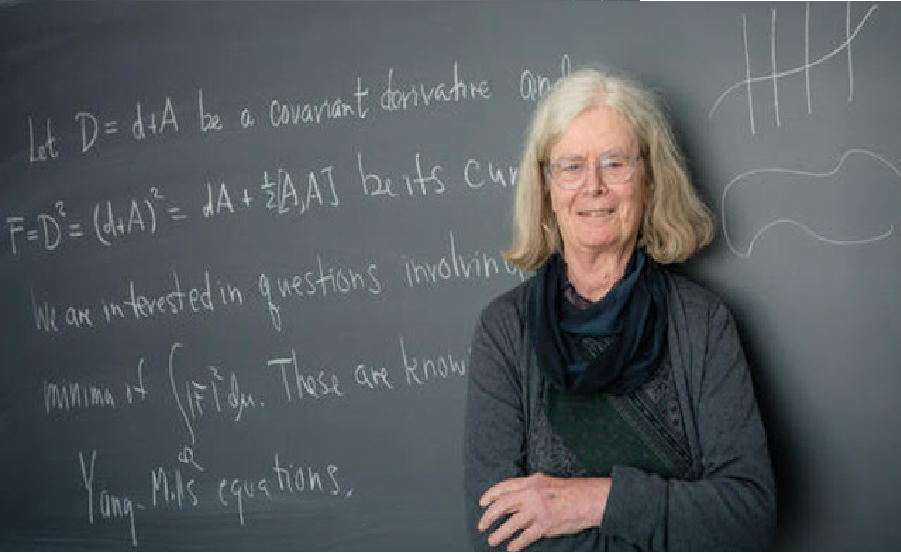Harvard Emergency Briefing After Shocking Discovery About 3I/ATLAS
The halls of Harvard University are no strangers to groundbreaking scientific announcements. From revolutions in physics to new understandings of the cosmos, the institution has long been a center of discovery. But earlier this week, Harvard officials called an emergency scientific briefing unlike any in recent memory. The subject: the mysterious interstellar object designated 3I/ATLAS—and new revelations that could reshape our understanding of the solar system, interstellar space, and even the possibility of extraterrestrial intelligence.
This briefing, attended by astrophysicists, astronomers, planetary defense experts, and media outlets worldwide, centered on data that Harvard researchers described as “shocking, unprecedented, and urgent.” According to their findings, 3I/ATLAS may not simply be another passing interstellar visitor—it could be exhibiting behavior that suggests purposeful trajectory adjustments.
The Rise of 3I/ATLAS
3I/ATLAS was first detected in early 2020 by the ATLAS (Asteroid Terrestrial-Impact Last Alert System) survey in Hawaii. It became the third confirmed interstellar object to pass through our solar system, following the enigmatic ‘Oumuamua (1I/2017 U1) and the cometary visitor 2I/Borisov.
At first, 3I/ATLAS was thought to be a faint, icy body shedding dust and gas as it hurtled through the inner solar system. But unlike Borisov, its orbit was irregular, and unlike ‘Oumuamua, its brightness varied unpredictably. These irregularities fueled debates within the astronomical community, with some dismissing the anomalies as observational error and others suggesting deeper mysteries.
Now, Harvard’s emergency briefing suggests that the skeptics may need to rethink their assumptions.
Data That Sparked Alarm
Dr. Lena Corbett, director of Harvard’s Center for Astrophysics, opened the briefing by unveiling new tracking data from multiple observatories worldwide, corroborated by the James Webb Space Telescope (JWST).
According to Corbett, 3I/ATLAS is not behaving like a typical comet or asteroid. “We are observing sustained deviations in its trajectory that cannot be explained solely by gravitational interactions or standard outgassing from volatile materials,” she said.
Put simply, the object appears to be adjusting its path—ever so slightly, but consistently. These course corrections, tiny though they may seem across millions of kilometers, indicate something extraordinary: either 3I/ATLAS is an unprecedented natural object with unknown physics at play, or it is responding to forces—or control—beyond our current understanding.
Echoes of ‘Oumuamua
For many scientists, the Harvard revelations instantly rekindled memories of the ‘Oumuamua controversy. In 2017, the elongated, tumbling object zipped past Earth, baffling astronomers. Some, including Harvard astrophysicist Dr. Avi Loeb, argued that its unusual acceleration and reflective surface suggested it might be a piece of alien technology—perhaps a solar sail or probe.
At the briefing, Dr. Loeb himself addressed the audience. “3I/ATLAS is exhibiting even more dramatic anomalies than ‘Oumuamua,” he said. “The deviation patterns are not random. They are periodic, almost as though the object is scanning or reacting to its environment. If we consider technological explanations for ‘Oumuamua, we must do the same—if not more urgently—for 3I/ATLAS.”
His words sent a ripple of tension across the auditorium.
A Possible “Arrival”?
The most startling claim came during the latter half of the briefing. Harvard researchers presented simulations indicating that 3I/ATLAS is slowing down relative to what would be expected of an interstellar traveler simply passing through.
“Objects entering the solar system from interstellar space typically accelerate as they approach the Sun, then sling outward on hyperbolic escape trajectories,” explained Dr. Rajesh Malhotra, a visiting planetary dynamicist. “But 3I/ATLAS is decelerating. That should not be possible without an external force at play.”
This revelation prompted a question that hung heavily in the room: Is 3I/ATLAS preparing to stop—or even to remain within our solar system?
The phrasing of Harvard’s official statement was careful: “New data suggest the possibility that 3I/ATLAS is transitioning from a hyperbolic escape path to a bound orbit, which may signify intentional maneuvering or unknown astrophysical processes.”
But to many in attendance, the implication was clear: this object may be arriving, not departing.
Planetary Defense Concerns
The possibility of a large interstellar body maneuvering through our solar system raised immediate concerns from planetary defense experts. If the object were natural, its irregular movements could make predicting its path extremely difficult—potentially increasing risks if it were to cross near-Earth space.
Dr. Elena Ruiz, NASA’s Planetary Defense Coordination Office representative at the briefing, reassured the audience that current models show no imminent threat to Earth. However, she admitted the unpredictability was “deeply troubling.”
“When you can’t predict where an object will be in six months, you can’t fully rule out hazards,” she said. “That’s why this briefing is so important—we need global coordination to track, study, and prepare for any eventuality.”
The Search for Signals
Perhaps the most electrifying announcement came toward the end: Harvard researchers confirmed that several radio observatories, including the Breakthrough Listen initiative, have trained their instruments on 3I/ATLAS to search for any artificial transmissions.
So far, no confirmed signals have been detected. However, Dr. Loeb emphasized that “absence of evidence is not evidence of absence.” If 3I/ATLAS is an engineered probe or artifact, it may not communicate in radio wavelengths at all.
“This could be a silent observer, a derelict craft, or even a fragment of alien technology drifting between stars,” Loeb suggested. “We have to remain open to possibilities beyond the conventional.”
Reactions Within the Scientific Community
The Harvard briefing has already ignited a firestorm of debate. Some astronomers caution against leaping to extraordinary conclusions.
“This could be a comet with highly unusual outgassing jets,” argued Dr. Karen Miyamoto of Caltech. “We’ve seen objects behave strangely before. Exotic physics or alien probes should be our last resort, not our first explanation.”
Others, however, see this as a watershed moment. “If the data holds, this is the second interstellar object in five years to defy natural explanation,” said Dr. Alejandro Velasquez of the European Southern Observatory. “At what point do we admit that the extraordinary may be staring us in the face?”
What Happens Next?
Harvard has announced the creation of a Rapid Response Interstellar Taskforce, bringing together experts from NASA, ESA, and private observatories. Their mission will be to coordinate tracking, analysis, and—if possible—proposals for sending a probe to intercept 3I/ATLAS.
The challenge is immense: intercepting a fast-moving interstellar body requires extraordinary precision and resources. Yet the stakes may justify the effort.
“If this is just a bizarre comet, we’ll learn invaluable new science,” said Dr. Corbett. “But if it is something more—if it is technology from another civilization—then we are standing on the threshold of one of humanity’s greatest discoveries.”
Conclusion: A Cosmic Turning Point?
The emergency briefing at Harvard may well be remembered as the moment the world was asked to confront the unimaginable. Whether 3I/ATLAS is a comet behaving badly, a fragment of interstellar debris, or a craft of alien origin, its story is far from over.
In the weeks and months ahead, telescopes around the globe will remain locked on its path. Governments and agencies will weigh how to respond. And the public will watch with anticipation—and perhaps unease—at the unfolding mystery in the sky.
As Dr. Loeb concluded in his closing remarks: “For the first time in human history, we may not be asking whether we are alone—but whether the visitors have already arrived.”





